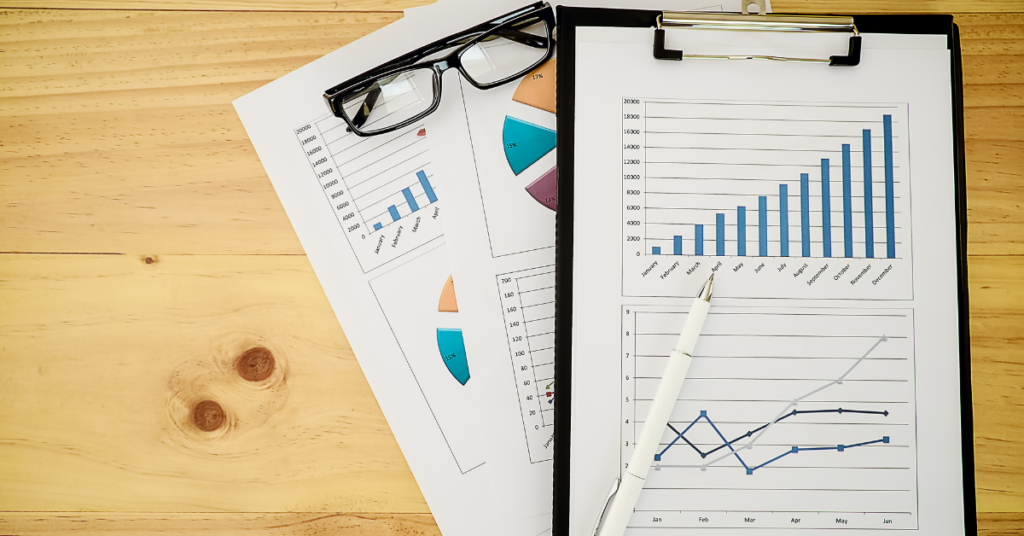While we don’t have a crystal ball to look into the future of our business, we can look at certain metrics to give us an indication of future performance.
These are your Lead and Lag metrics that provide insight into the future and past performance of a business, respectively. Once you understand the difference, you’ll be able to make more informed decisions and drive your business growth.
If there is one thing you take away from reading this, you want to look at Lead Metrics.
Lead Metrics
These are performance indicators that provide early signals of future performance and are used to predict future outcomes.
Examples: Examples of lead metrics include website traffic, customer engagement, and lead generation. If you have an online business you’ll want to take note of your website traffic or cart abandonment rate. If you’re a builder you’ll want a clear project schedule showing outstanding jobs to complete and costs of material.
Lead metrics are important for businesses to track as they provide early warning signs of potential issues and allow for proactive decision-making.
Lag Metrics
Lag metrics are performance indicators that measure past performance and are used to evaluate results. Usually, your financial statements are used for this purpose. Your financial statements are great for looking at where you are now, and how far you’ve come, but you also need to look at Lead metrics at the same time as your financial statements are not going to tell you a major event is going to happen.
Examples: Examples of lag metrics include revenue, profit. If you’re a pharmacist you’ll be looking at patient satisfaction or quality of care metrics. For those in the construction industry, your lag metrics could include the profitability of projects, or quality of work – was there any rework required.
If you’re in Retail, you’ll probably be familiar with ATV – Average Transaction Value which is a Lag metric in the retail industry.
Lag metrics are important for businesses to track as they provide a historical view of performance and help to evaluate the effectiveness of past decisions.
Get in touch with us to gain a better understanding of these metrics for your business.
It’s a balancing act as you need to be able to predict future performance while also evaluating past performance. That’s why looking at both your lead and lag metrics will help you make better decisions and hopefully improve the overall performance of your business.
We know the importance of these metrics and can help you better understand them. Ask us about this in your next meeting.
See more examples below:
Lead Metrics:
- Website Traffic
- Customer Engagement (e.g. email open rates, click-through rates)
- Lead Generation (e.g. number of leads generated, conversion rate)
- Sales Funnel Metrics (e.g. number of prospects, number of qualified leads)
Lag Metrics:
- Revenue
- Profit
- Customer Satisfaction (e.g. Net Promoter Score, customer satisfaction survey results)
- Return on Investment (ROI)
- Market Share
- ATV – Average Transaction Value
Here are some examples of lead and lag metrics for specific industries and will vary depending on the goals of the business.
E-commerce:
Lead Metrics:
- Website traffic
- Cart abandonment rate
- Conversion rate
Lag Metrics:
- Revenue
- Gross profit
- Return on advertising spend (ROAS)
SaaS (Software as a Service):
Lead Metrics:
- Monthly Recurring Revenue (MRR)
- Customer Acquisition Cost (CAC)
- Churn rate
Lag Metrics:
- Lifetime Value (LTV)
- Gross Margin
- Customer Satisfaction
Healthcare:
Lead Metrics:
- Patient volume
- Provider utilization
- Average wait time
Lag Metrics:
- Revenue per patient
- Patient satisfaction
- Quality of care metrics
Manufacturing:
Lead Metrics:
- Lead time
- Production efficiency
- Inventory turnover
Lag Metrics:
- Revenue
- Gross profit
- Return on assets (ROA)
Building and Construction industry:
Lead Metrics:
- Project schedule (e.g. percentage of completion, number of milestones achieved)
- Material and labor costs
- Safety performance (e.g. number of accidents, near misses)
Lag Metrics:
- Project profitability
- Customer satisfaction
- Quality of work (e.g. number of defects, rework required)
To discuss your metrics further with us please let us know so we can book in the appropriate time.



